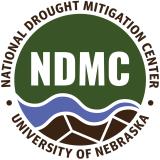Intermountain West Drought Briefing: December 5, 2023
Current drought conditions vary widely across the Intermountain West. Only 9.6% and 4.8% of the northern states of Utah and Wyoming are in drought, respectively. Meanwhile, the central and southern areas of the region are experiencing Moderate to Exceptional Drought (D1–D4): 26.9% of Colorado is in drought (2.1% in D3), 96.8% of New Mexico is in drought (43% in D3–D4), and 57.2% of Arizona is in drought (6.1% in D3). Short-term and long-term drought persists in the southern portion of the Intermountain West.
This webinar examined current conditions for the Intermountain West and the forecasted drought conditions for Arizona, Colorado, New Mexico, Utah, and Wyoming.
For more information, please contact Dr. Gretel Follingstad (gretel.follingstad@noaa.gov).




